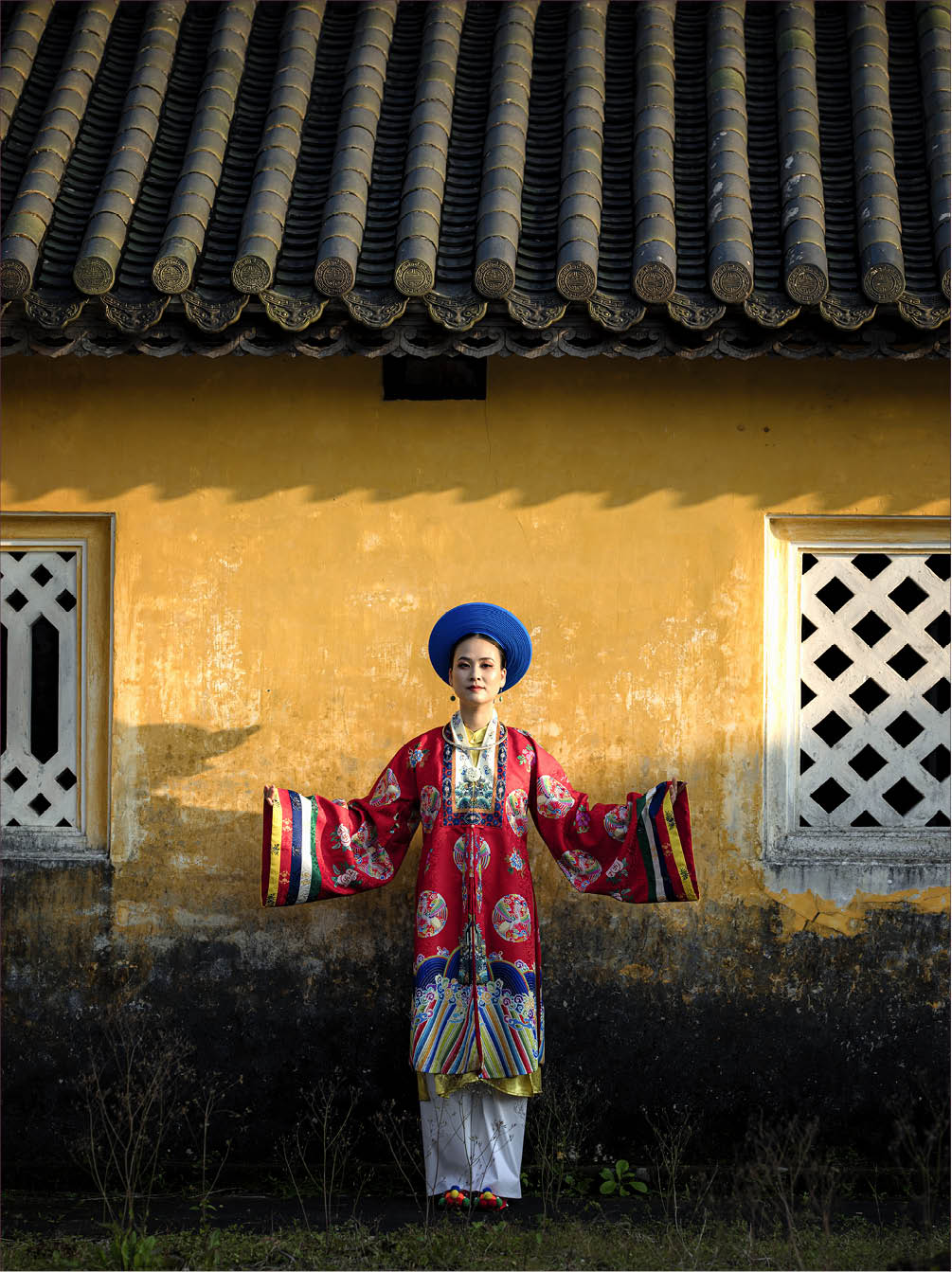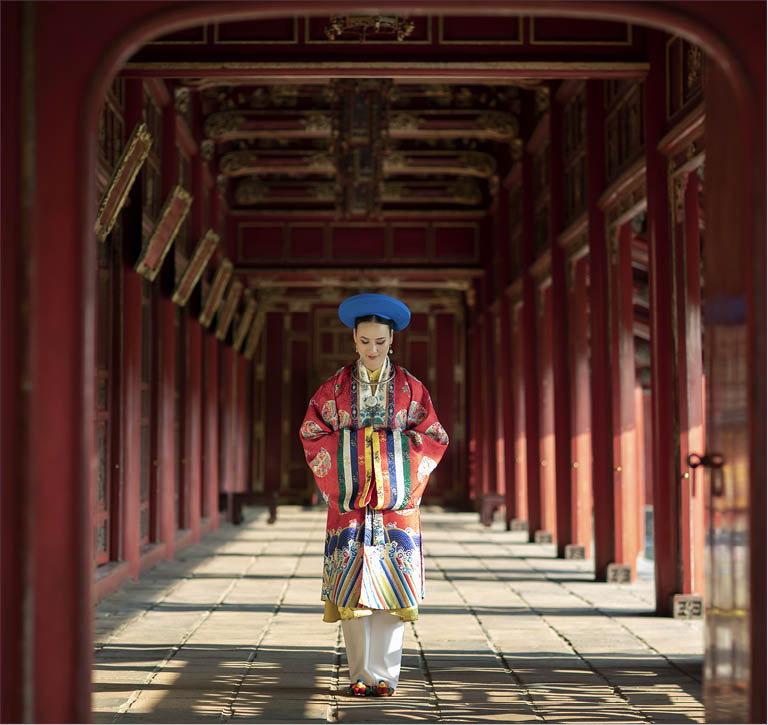
Ao dai Nhat Binh has been remade, but many details are not close to the original
According to the research by Mr. Nguyen Xuan Hoa, former Director of Thua Thien Hue Department of Culture and Information, before 1945, Hue women often wore ao dai Nhat Binh and khan vanh (a kind of turban for women). Ao dai Nhat Binh was originally the common costume for concubines and princesses, but it then spread to wealthy noble ladies and girls. Later, young women liked to wear it at their weddings and in formal ceremonies.
Nguyen Xuan Hoa highly values the fact that Thua Thien Hue wants to pioneer the preservation of the identity of ao dai Nhat Binh while Vietnam in general and Hue in particular are trying to conserve and promote the traditional value of ao dai.
An important milestone for ao dai Hue was in 1744 when Lord Nguyen Phuc Khoat became king in Phu Xuan. He issued many policies about the change of costume. Ao dai came into being and had become the main costume for both men and women in the Inner Realm.
Nearly 100 years later, ao dai, originated from Phu Xuan, gradually replaced the traditional costume in the Outer Realm. From Hue, the cradle of ao dai, the Vietnamese ao dai has become a symbol and cultural identity. Among various traditional costumes of different countries, ao dailooks formal and unique. Particularly in Hue, the former imperial capital of Vietnam, ao dai represents the golden past.

Ao dai Nhat Binh has been remade, but many details are not close to the original.
Recently, the collection of royal costume of the Nguyen Dynasty made for the movie Phuong Khau has been highly valued for its nearest resemblance to the original, especially ao dai Nhat Binh in the imperial city.
It is said that Nhat Binh is an adaptation of Phi Phong vest in the Ming Dynasty. This is the type of loose four-paneled and two-flapped garment with a broad collar in the middle forming a rectangular on the chest, buttons and long and wide sleeves. It is decorated with embroidered patterns in the royal manner.
Since as early as 1807 (the sixth year of Gia Long’s reign) there had been regulation about wearing ao dai Nhat Binh in the imperial city. According to the book Kham dinh Dai Nam Hoi Dien Su Le, ao dai Nhat Binh of different colors for different ranks was the compulsory costume for court events.
Dowager empresses and queens wore phoenix robes at court events and ao dai Nhat Binh as casual costume. The regulation for the hat was not fixed. At the beginning of the Nguyen Dynasty, Kim uoc phat was used. In 1846 in Thieu Tri’s reign, Kim uoc phat was replaced by Kim phuong. By the end of the Nguyen Dynasty, the familiar image was ladies in ao dai Nhat Binh and khan vanh.
At present, many tailors in big cities can make, sell and rent out ao dai Nhat Binh. Many brides wear ao dai Nhat Binh when prostrating in front of the ancestor altar.
“However, in the effort of building and developing the trademark for ao dai Hue, Thua Thien Hue should pioneer the restoration of Vietnamese ao dai, ao dai Nhat Binh and khan vanh, introducing them to other places. The restoration of ao dai Nhat Binh in Hue will diversify the traditional Vietnamese ao dai heritage. When one says Hue is the cradle of ao dai, one thinks of ao dai Nhat Binh, which is unique and very Hueish,” said Mr. Nguyen Xuan Hoa.
Story: DONG VAN, Photos: DOAN QUANG